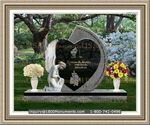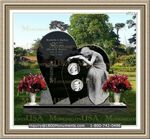|
Guidelines For Appropriate Funeral Attire
At one time, all mourners were expected to wear formal black dress, complete with hats, ties, veils and gloves. Nowadays the rules have become somewhat more relaxed due to the many cultural, religious and personal influences on burial arrangements. For times when no special requests have been made, there are guidelines for appropriate funeral attire.
The traditional black suit and simple dress are very much still considered the best choice. The modern version is a semi-formal look that is just slightly more relaxed. The new normal is a bit more casual and comfortable, incorporating the additional accepted colors of gray and dark blue.
For men, a full suit and tie ensemble is traditional, though the more casual slacks, sport coat and collared golf shirt combination is also acceptable. The main thing is to keep it conservative and always wear black dress shoes. Pant, jacket and tie colors should remain dark with patterns being subdued or not at all.
Women may wear office worthy slacks and dresses in dark colors and conservative styles. The primary rule is not to choose something with a low neckline, high hemline, flashy patterns or bare shoulders because one should not draw attention to herself at these events. Heels are still appropriate though if attending a graveside service, flats may be more comfortable.
Children have less strict guidelines to follow. Boys can opt for suits, dress slacks and collared shirts, or even sweater vests while the girls should wear dresses without excessive ruffles or bold, colorful patterns. The youngsters clothing does not have to be black, though it should be of dark or neutral tones with a minimum amount of adornment.
The guidelines for acceptable funeral attire are good to fall back on when one is unsure of what to do, but keep in mind there will be times when these rules will not apply. A lot of religious sect and cultural groups have their own mourning garb traditions which guests should observe as a matter of respect. If the deceased specifically requested a particular dress code for their services, honoring their final wishes should take priority over tradition.
|
|



























